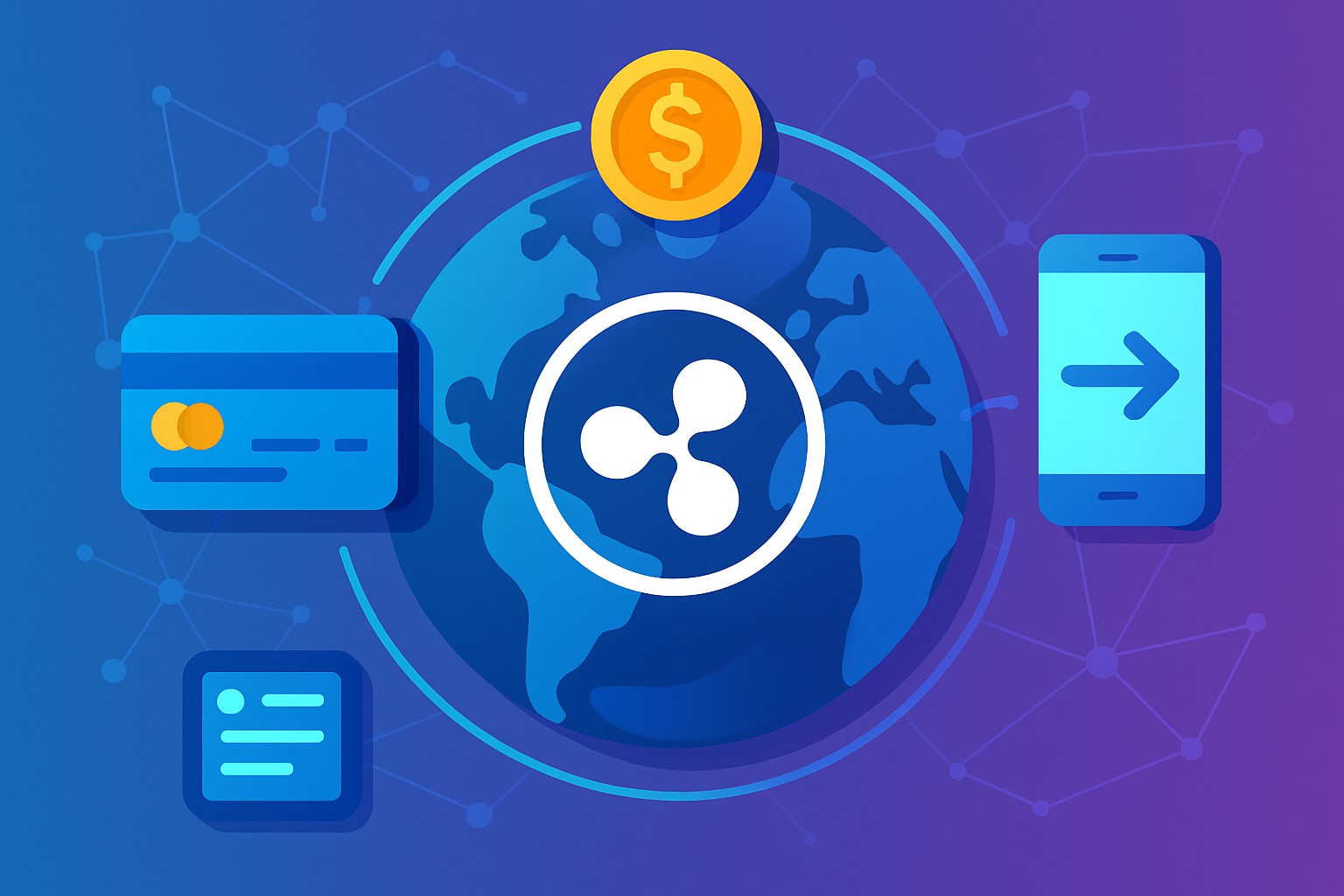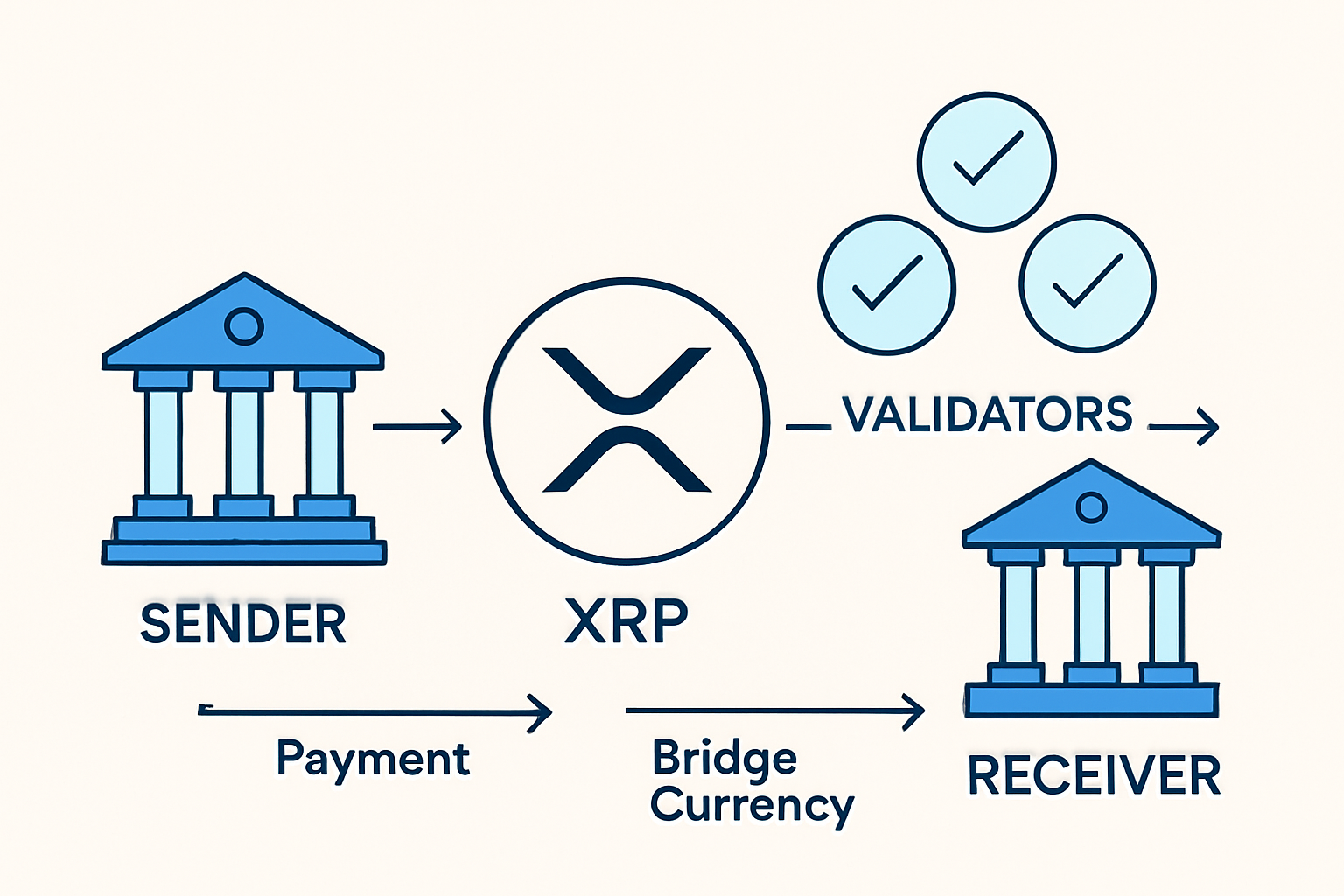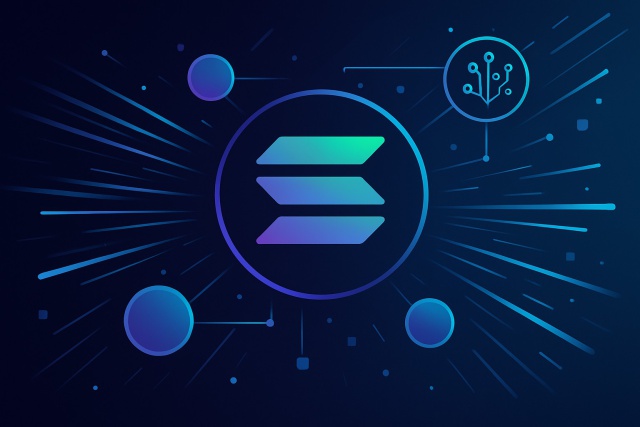What Is Ripple (XRP) and How Does It Work?


Ripple mixes a digital payment protocol with its own cryptocurrency XRP to deliver fast and low-cost cross-border transactions that really stand out.
What Exactly Does Ripple (XRP) Stand For?
Ripple is a fintech company dedicated to crafting solutions that speed up global payments. Think of RippleNet as a close network of banks and payment providers working hand in hand and powered by Ripple's technology. XRP is the digital asset designed to boost liquidity and speed transactions within this system.
- Ripple is a technology company that makes global payments flow more smoothly and efficiently—like oiling the gears behind the scenes.
- RippleNet is a decentralized network that connects financial institutions and is powered by Ripple's software to bring harmony to a tangled web.
- XRP is a digital token that provides fast and affordable liquidity across RippleNet to help keep things moving without breaking the bank.
- Ripple’s goal is to shake up cross-border money transfers by trimming the usual delays and headaches in international finance.
- Within Ripple’s ecosystem, XRP acts as the bridge currency, making currency exchanges feel seamless like switching lanes without a hitch.
Clear up a common misconception: Ripple Labs, the people behind RippleNet, don’t have full ownership over XRP. XRP isn’t your typical cryptocurrency like Bitcoin or Ethereum. Unlike those decentralized coins, Ripple works closely with financial institutions and manages parts of the XRP ledger.
How Ripple Actually Works (and Why It’s More Than Just Another Crypto Buzzword)
Ripple is built around the Ripple Consensus Ledger (RCL), a distributed ledger maintained by independent validators spread out across the globe like a well-coordinated team. Instead of relying on mining, transactions get the green light through a handshake agreement among these trusted nodes.
A sender kicks off a payment through RippleNet or a connected financial institution.
Ripple's validators step in, receiving the transaction and giving it a thumbs-up by reaching consensus.
Once everyone’s on the same page, the transaction gets added to the Ripple Consensus Ledger.
Settlement usually wraps up within seconds, making sure there’s no funny business like double-spending.
XRP plays the role of a swift and savvy bridge between currencies, smoothing out those pesky cross-border transfers.
When a user wants to send USD to someone who receives EUR, the payment starts with USD on RippleNet. XRP usually acts as the bridge, quickly converting USD to XRP. It then switches from XRP to EUR once it reaches the destination.
The Ripple Consensus Protocol Versus Blockchain Mining
Ripple's consensus protocol plays by its own rules unlike mining-heavy blockchains such as Bitcoin because it steers clear of energy-guzzling computations. A trustworthy circle of validators band together to hash out agreement on the order and legitimacy of transactions. This method not only cranks up transaction speed but also keeps network fees low.
Imagine Ripple's consensus as a dependable crew coming together swiftly to agree on payments, rather than miners scrambling through costly puzzles. It’s a much speedier process and, honestly, a friendlier approach for the environment.
What Are the Uses of XRP, Anyway?
- XRP makes settling cross-border payments involving different currencies a breeze and cuts down the wait time considerably.
- Acting as a bridge currency banks and businesses no longer need to keep pre-funded accounts sitting idle in foreign currencies. This is a real game-changer.
- Financial institutions tap into XRP to get liquidity right when they need it. This can ease their capital requirements and free up resources.
- When it comes to micropayments and remittances XRP shines with its lightning-fast processing and wallet-friendly fees—small but mighty benefits.
- Partners in RippleNet weave XRP into their payment systems and leverage blockchain’s efficiency to smooth out the whole transaction experience.
Many banks and payment providers lean on XRP to get quick access to liquidity in the fast-moving world of international transactions, making customers happier and trimming operational costs along the way.
Benefits and Critiques of Ripple and XRP A Closer Look
| Advantages | Criticisms |
|---|---|
| Transactions happen at lightning speed | Some individuals fret about node centralization |
| Transaction fees are usually quite low, which is a nice bonus | Regulatory hurdles keep popping up on the horizon |
| Infrastructure built to handle growth without breaking a sweat | The XRP token’s price tends to do a bit of a rollercoaster dance |
| Cross-border transfers glide along smoothly and efficiently | Ongoing legal battles cast a bit of a shadow on its reputation |
| Always ready to support liquidity when it’s needed most | Adoption still trails behind Bitcoin, which is no surprise to some |
Ripple and XRP bring an intriguing twist to the way payments operate, though they frequently catch some flak over their degree of decentralization and the murkiness surrounding their regulatory status.
A Handy Guide to Buying, Storing, and Using XRP Securely
If you are looking to dive into XRP you can snag some on popular cryptocurrency exchanges without much fuss. Once you’ve got your hands on some the next step is picking a wallet that keeps your assets under lock and key. Whether it’s hardware wallets or software wallets each comes with its own set of perks and quirks for security and user-friendliness.
- Major exchanges like Coinbase, Binance, and Kraken support XRP trading and offer platforms that are user-friendly even if you’re not a tech wizard.
- For those who prefer extra safety, hardware wallets like Ledger and Trezor provide offline cold storage that gives your assets solid protection.
- On the flip side, software wallets such as XUMM or Toast Wallet make accessing XRP quick and painless which is perfect when you need to move fast.
- Always double-check your transaction details before hitting confirm. It’s a small step that saves a lot of headaches.
- Guard your private keys like your most prized possession and never share them because you might invite trouble you don’t want.

Looking Ahead at Ripple and XRP What’s on the Horizon
Ripple is steadily building up its roster of partnerships with banks and payment providers across the globe, all while navigating the usual soup of regulatory challenges. Developments in decentralized finance and the broader adoption of blockchain technology seem to be clearing the path for XRP to carve out a significant role in the future of financial networks—if things continue to line up as they’ve been.
As fintech keeps evolving at a dizzying pace, Ripple appears to be carving out a fresh path that brings traditional finance and blockchain technology closer than ever before. It’s a promising mix that might just shake up global payments by striking a clever balance between speed, compliance, and innovation—something that feels both exciting and, frankly, a bit overdue.
Useful Links
Start Your Crypto Journey with Coinbase Today
Ready to enter the cryptocurrency market but unsure where to begin? Coinbase makes buying, selling, and storing digital assets simple and secure for beginners and experts alike.








